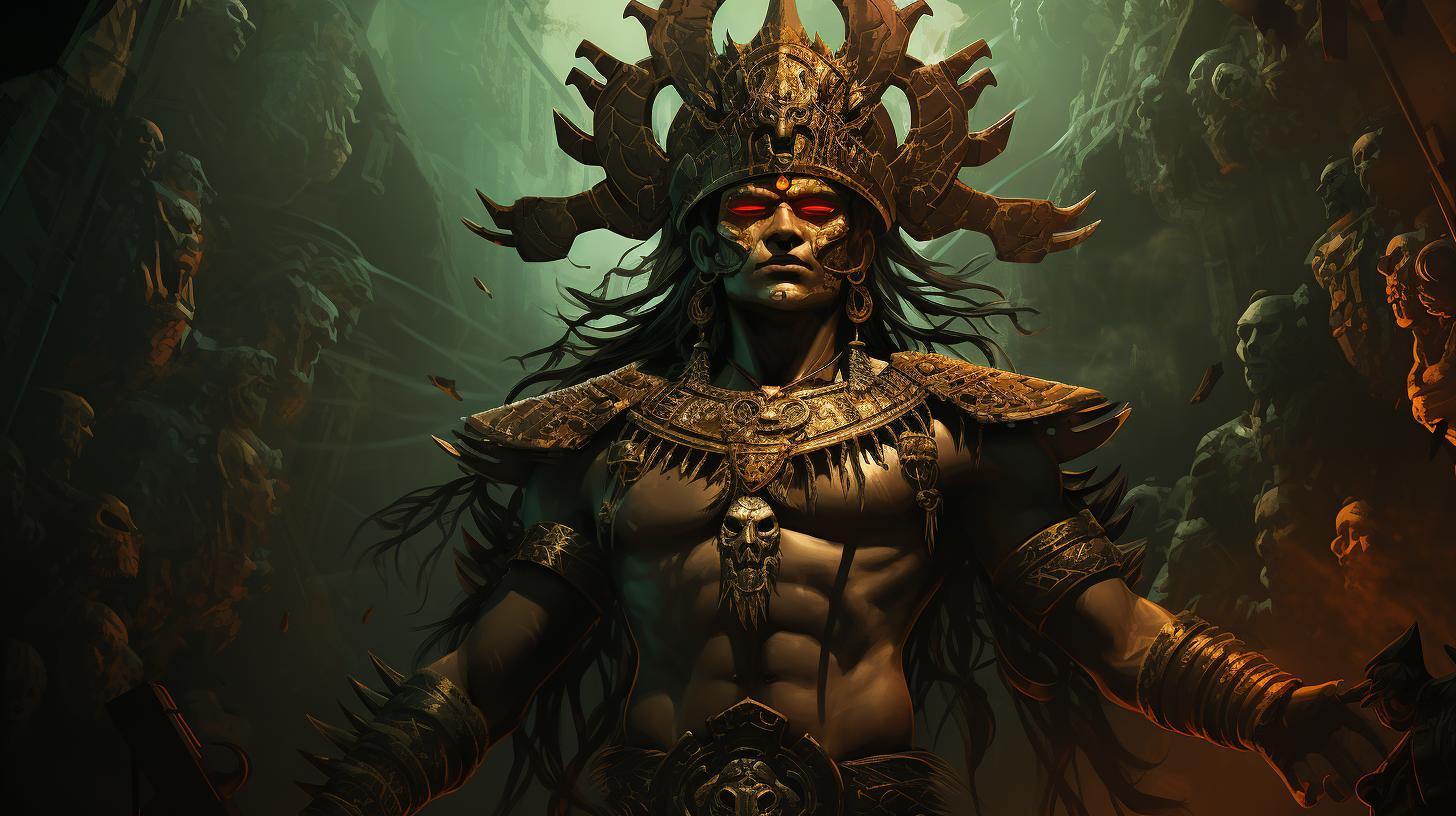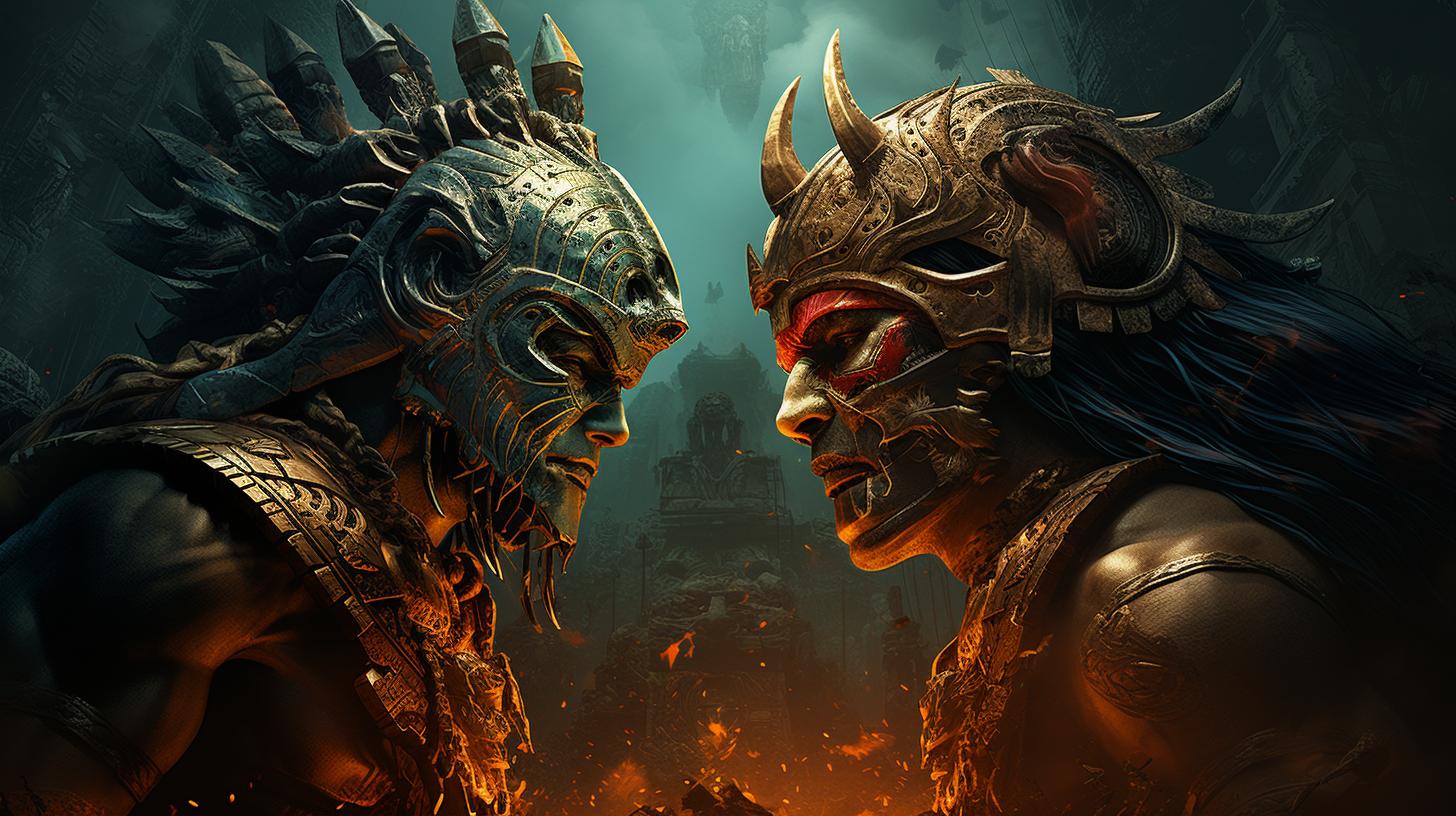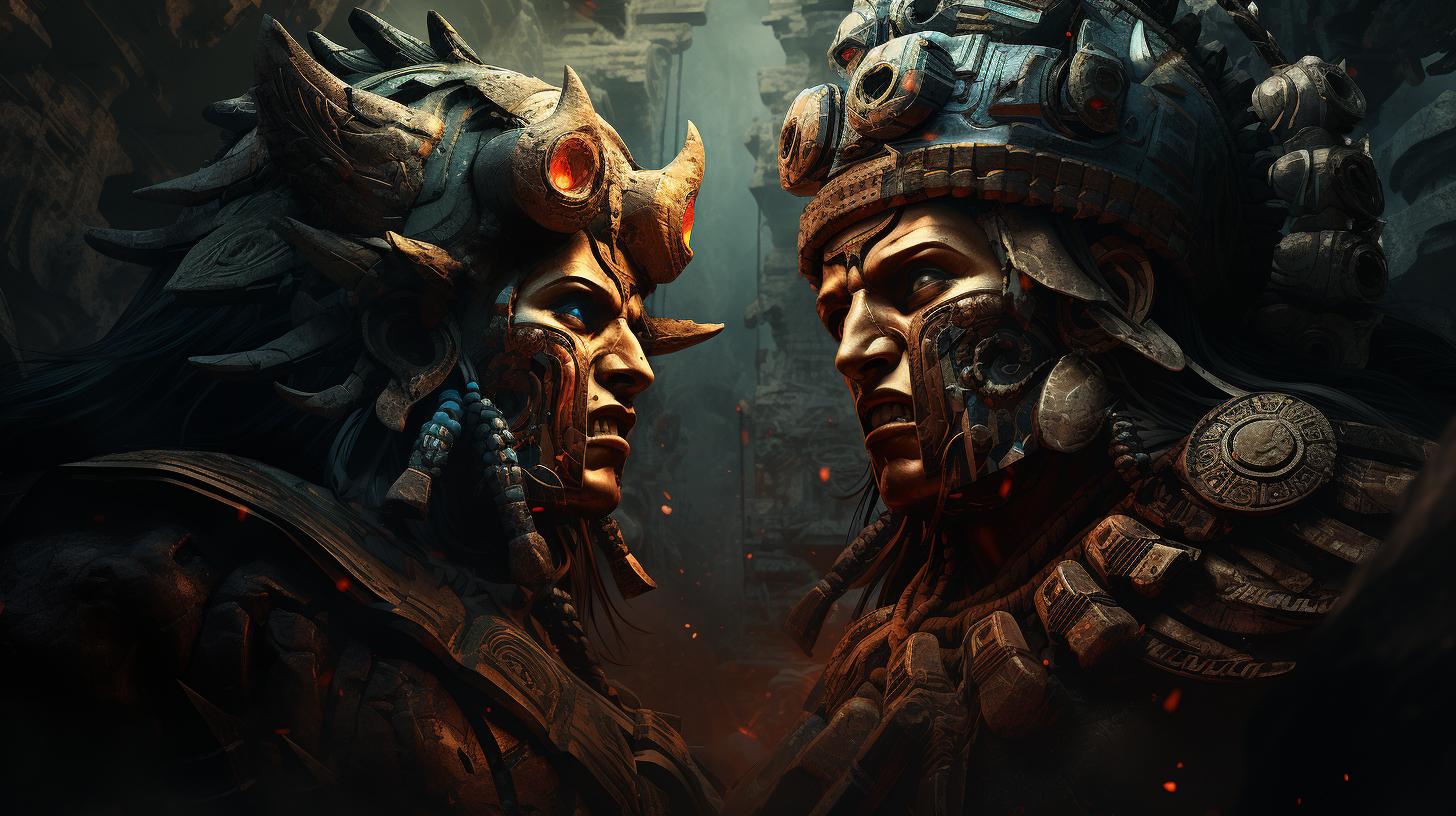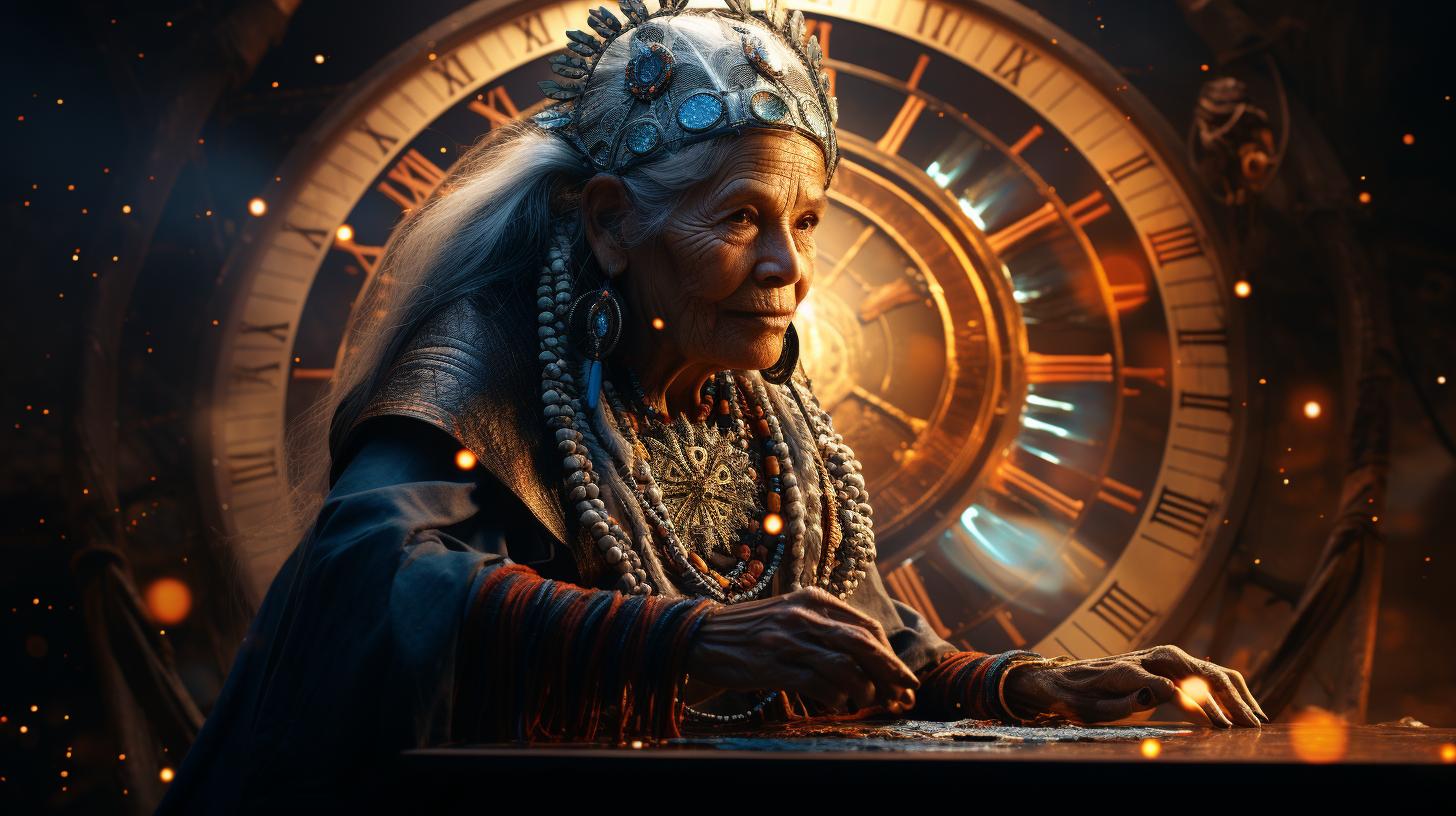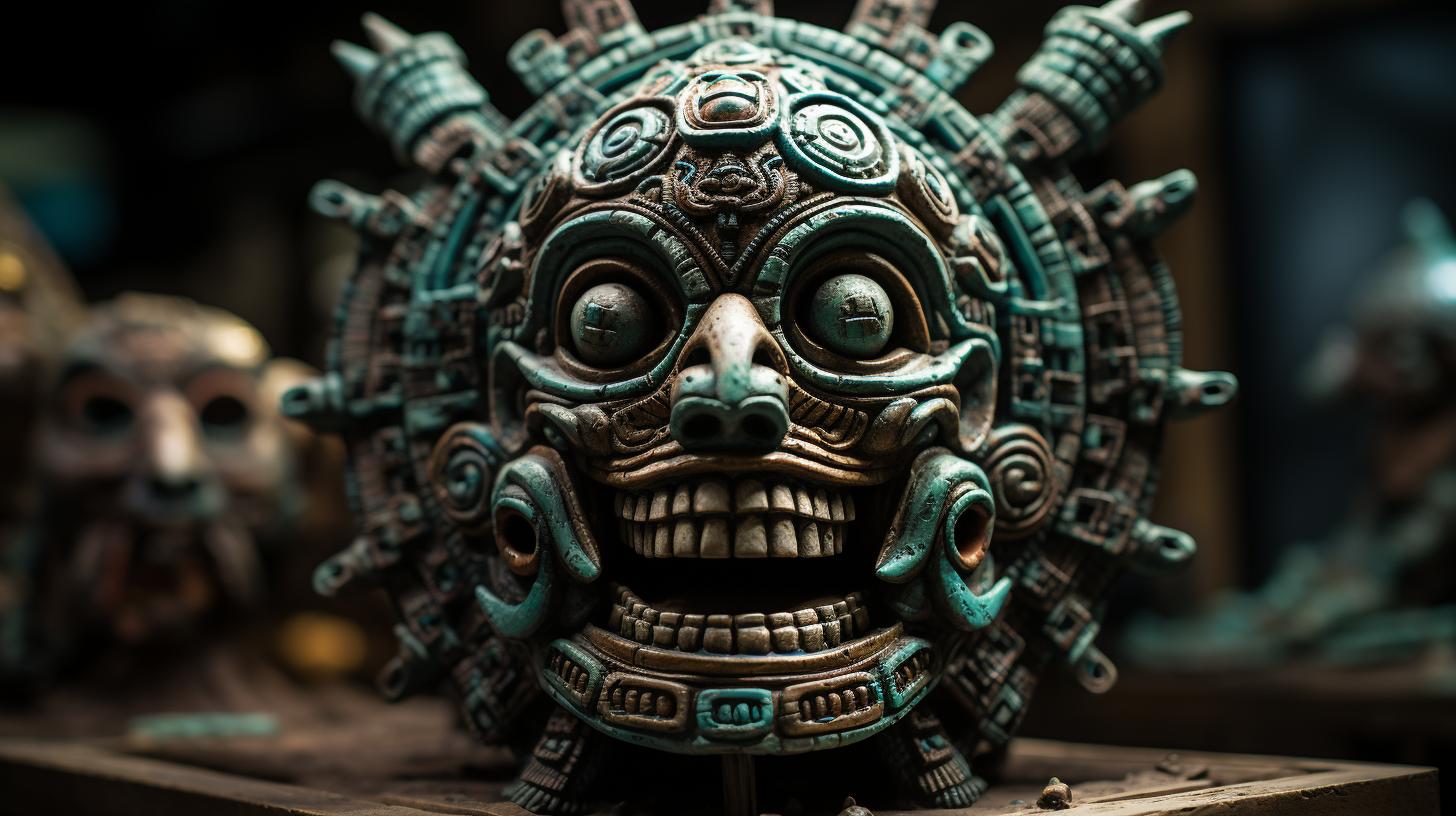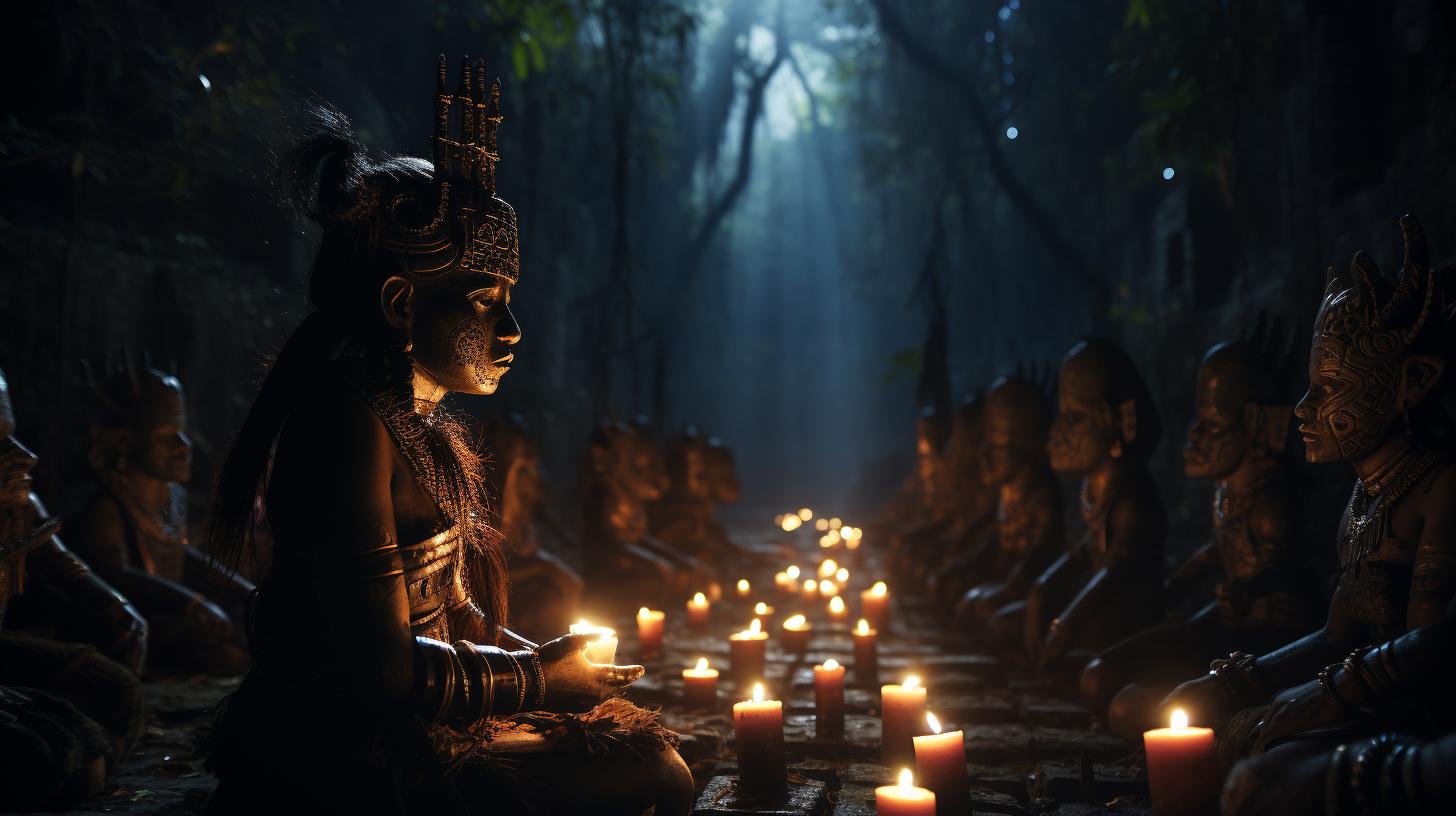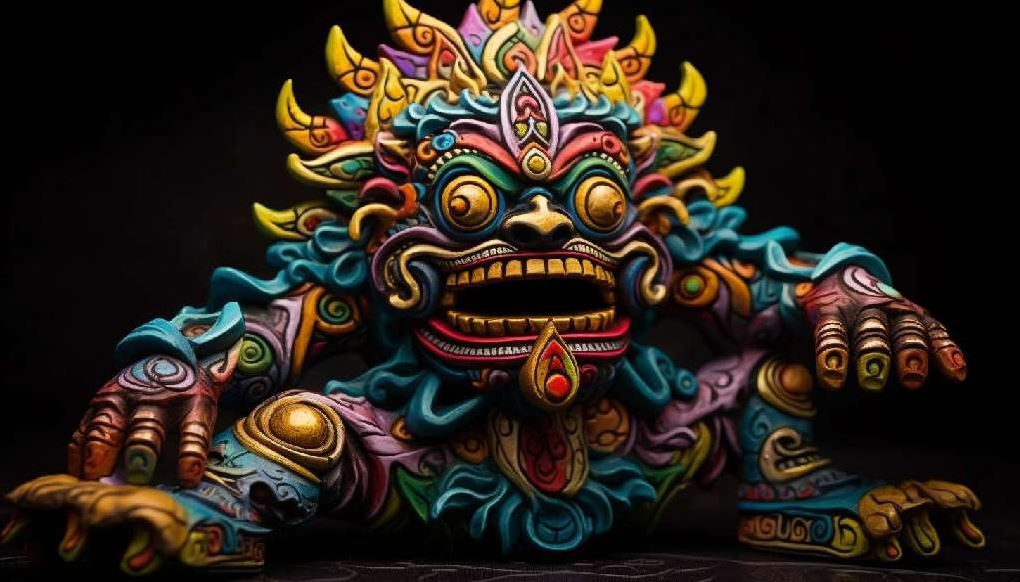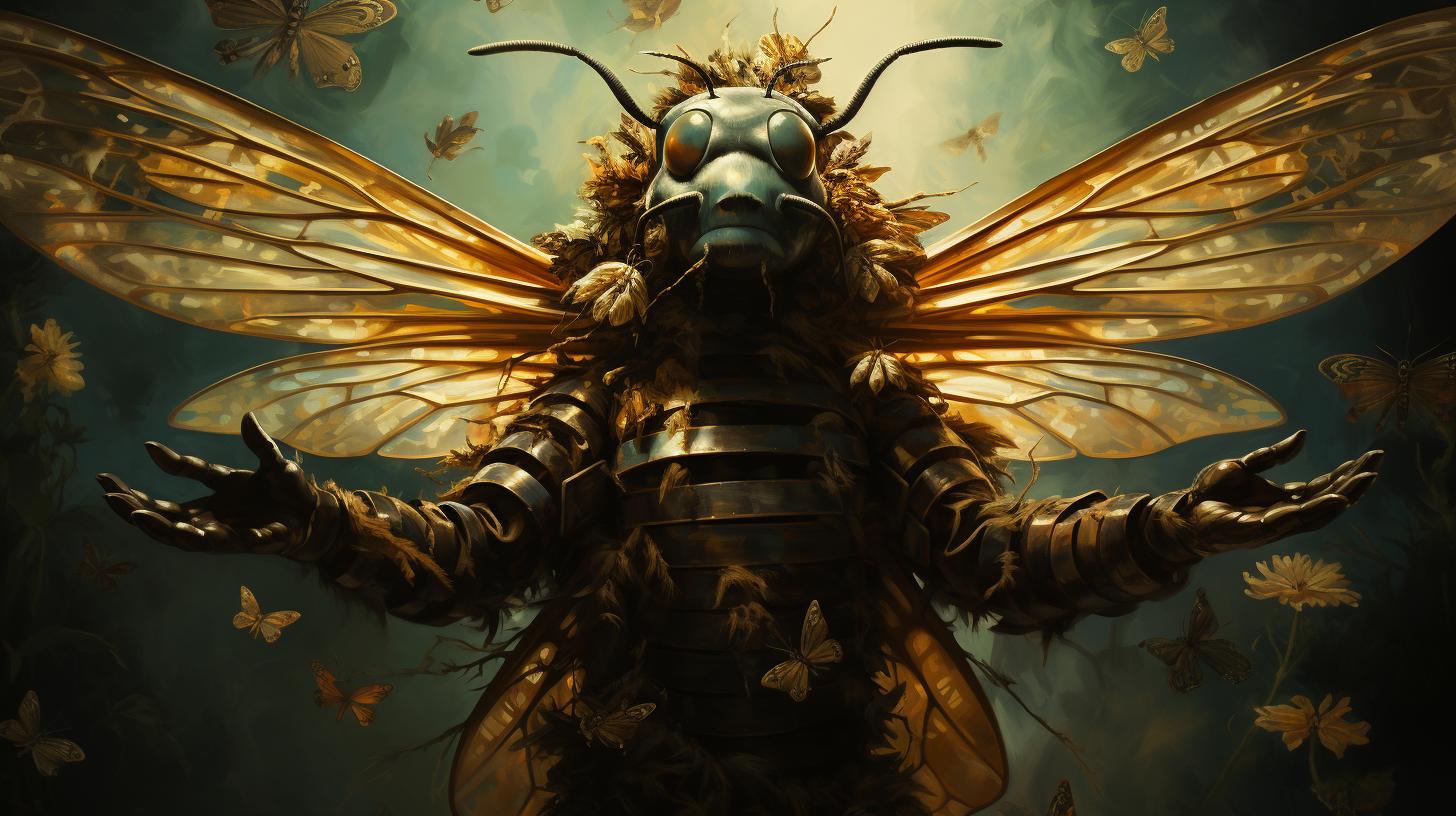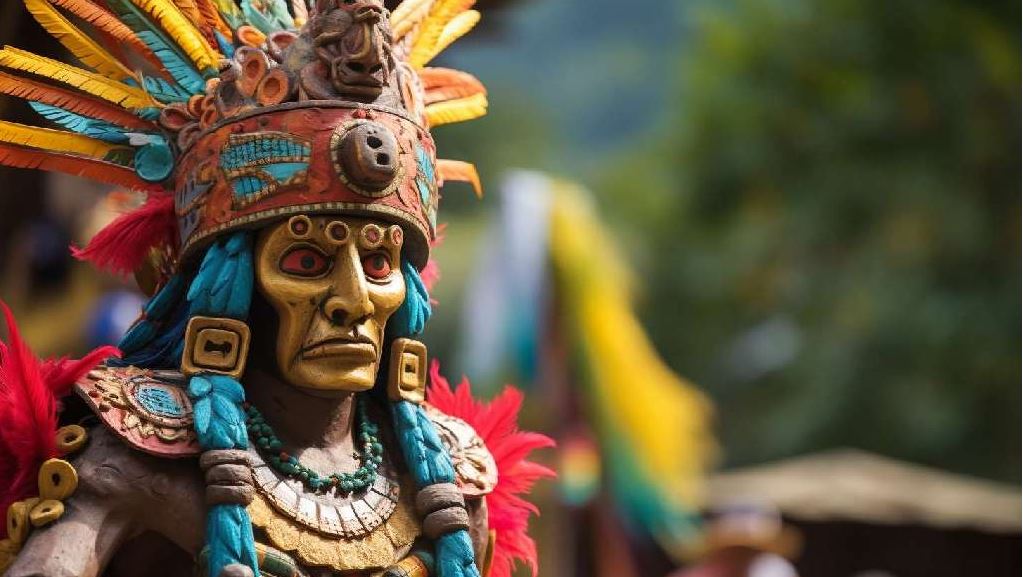Mayan God Yum Cimil: The Divine Lord of Death in Mayan Mythology
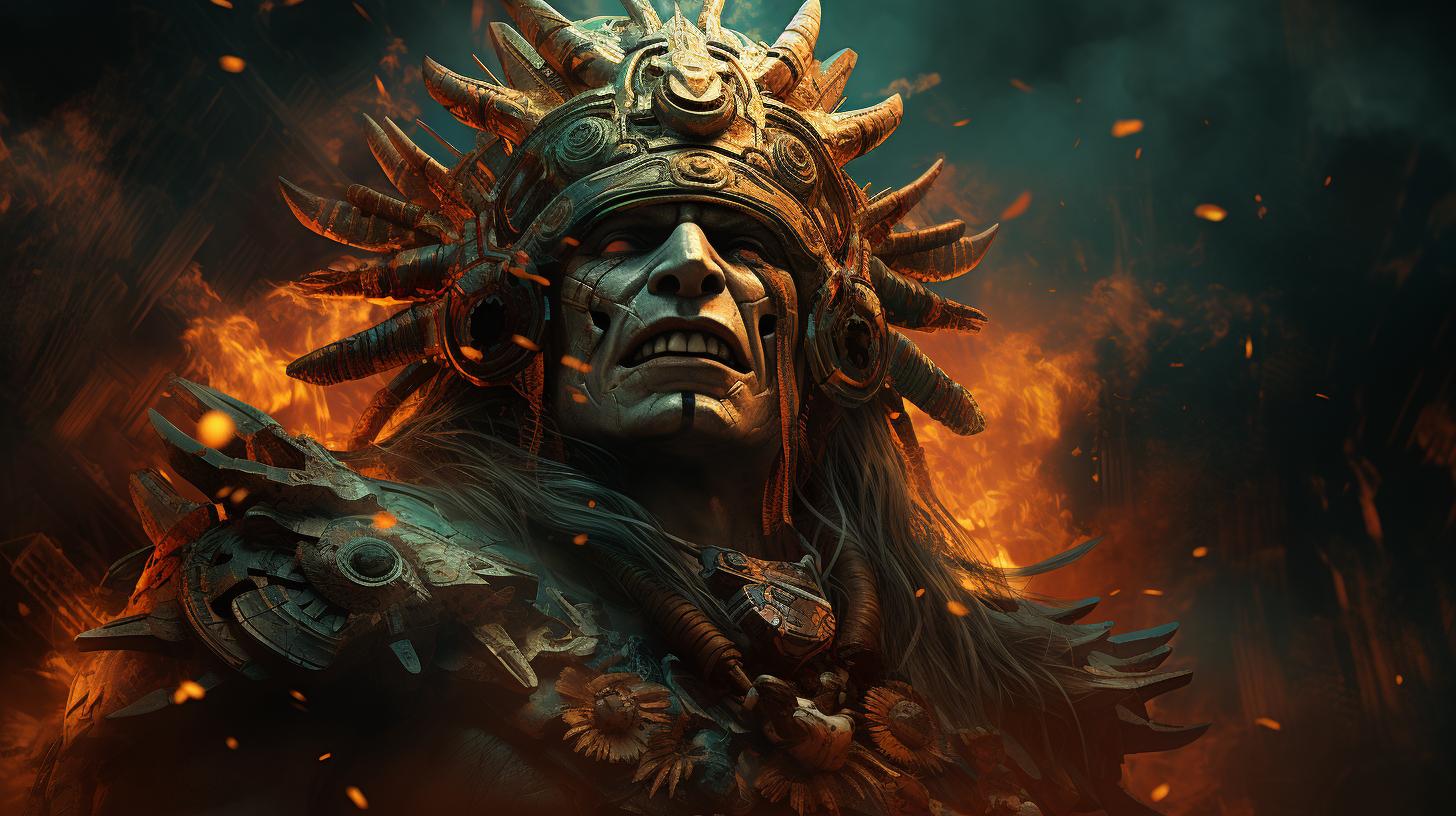
Yum Cimil, the Mayan God of Death, holds a significant role in Mayan mythology and culture. Believed to reside in the underworld, Yum Cimil symbolizes the cycle of life and death in the Mayan belief system.
Associated with other death gods like Ah Puch, Cizin, and Kisin, Yum Cimil’s representations can be found in various Mayan artworks and artifacts. Exploring the cultural significance and stories surrounding Yum Cimil provides insights into the rich mythological heritage of the ancient Maya civilization, offering a window into their understanding of the afterlife and spiritual realms.
The Mythology of Mayan Gods
The mythology of the ancient Mayan civilization holds a rich tapestry of deities, legends, and cosmic narratives. It provides a window into the beliefs and worldview of this remarkable Mesoamerican culture.
This section explores the origins of Mayan mythology and the profound significance of Yum Cimil, one of the prominent gods in Mayan cosmology.
.
The Origins of Mayan Mythology
The origins of Mayan mythology can be traced back to the Preclassic period, around 2000 BCE. Influences from earlier Olmec and Zapotec civilizations, as well as trade interactions with other Mesoamerican cultures, shaped and enriched the mythology of the Mayans.
Their complex cosmology emerged from a combination of religious, agricultural, and celestial beliefs.
Mayan mythology was intricately woven into their daily lives and permeated their art, rituals, and societal structures. It provided explanations for the creation of the world, the cycles of life and death, and the forces that governed the natural and supernatural realms.
The Importance of Yum Cimil in Mayan Culture
Among the pantheon of Mayan gods, Yum Cimil held a significant role as the lord of death. Yum Cimil embodied the inevitable passage from life to the afterlife, representing the cyclical nature of existence.
The Mayans revered and feared Yum Cimil, as he held power over the souls of the deceased and their journey in the underworld.
Yum Cimil’s importance extended beyond the realm of death. He also played a crucial role in ensuring the balance and harmony of the cosmos. The Mayans believed that proper rituals and offerings to Yum Cimil would secure blessings and protection for the living, while neglecting these duties could result in misfortune and disease.
Yum Cimil was often associated with other deities and elements of Mayan mythology, such as the sacred ceiba tree, caves, and the four cardinal directions. These connections reflected the interconnectedness of the spiritual and natural world, highlighting the holistic nature of Mayan cosmology.
The veneration of Yum Cimil deeply influenced Mayan culture, impacting rituals, burial practices, and the conceptualization of the afterlife. Exploring Yum Cimil’s role in Mayan mythology unravels the intricate layers of belief and provides insight into the cultural tapestry woven by this ancient civilization.
Yum Cimil: The Mayan God of Death
Yum Cimil, revered as the Mayan God of Death, holds a significant place in the intricate tapestry of Mayan mythology. As one of the prominent deities, Yum Cimil plays a vital role in shaping the beliefs and traditions of the ancient Mayan civilization.
Understanding Yum Cimil’s role provides a window into the Mayan perception of the cycle of life and death.
Yum Cimil’s Role in Mayan Mythology
In Mayan mythology, Yum Cimil is responsible for overseeing and guiding souls through the journey of death and the afterlife. He presides over Xibalba, the Mayan underworld, and acts as the ultimate judge of the deceased.
It is believed that Yum Cimil determines the fate and destination of each soul based on their acts during their earthly existence.
Yum Cimil’s Symbolism and Representation
Symbolically, Yum Cimil is often portrayed as a skeletal figure, embodying the omnipresence of death. His skeletal form represents the transitory nature of human life and serves as a reminder of the inevitability of death.
Yum Cimil’s association with decay and renewal represents the cyclical nature of existence in Mayan belief system.
Yum Cimil and the Underworld in Mayan Beliefs
In Mayan cosmology, the underworld known as Xibalba is the realm where Yum Cimil holds dominion. It is a place of great complexity and serves as the dwelling for various deities and ancestral spirits.
Yum Cimil’s role as the ruler of Xibalba grants him authority over the souls passing through this realm. It is believed that he guards the gates of the underworld and determines the fate of the deceased.
The Mayan people held a deep reverence for Yum Cimil, as they recognized the interconnectedness of life and death. They believed that death was just a part of the eternal cycle, and Yum Cimil played a pivotal role in facilitating this transition.
The elaborate rituals and practices associated with death in Mayan culture reflect their awe and respect for this powerful deity.
Connections to Other Mayan Death Gods
In addition to Yum Cimil, there are other Mayan death gods who play significant roles in Mayan mythology. These gods not only share similarities in their association with death but also have distinct characteristics that set them apart.
Let’s explore some of the prominent Mayan death gods:
Ah Puch: The Mayan Death God
Ah Puch, known as the principal death god in Mayan mythology, holds a significant place alongside Yum Cimil. Often depicted as a skeletal figure with ghoulish features, Ah Puch is associated with decay and destruction.
He rules over the ninth level of the underworld, known as Mictlan, where the souls of the dead reside. Ah Puch is often represented with symbols of death, such as skulls, owls, and bats.
While Yum Cimil is seen as a ruler over the general death domain, Ah Puch focuses on the more gruesome aspects of death and decay.
Cizin and Kisin: Other Mayan Death Deities
Within Mayan mythology, there are additional death deities, such as Cizin and Kisin, who have their own unique roles and attributes.
Cizin
Cizin, also known as Ah Cizin, is a death god associated with earthquakes and natural disasters. In Mayan belief, he represents the destructive force of death and is often depicted with a reptilian or skeletal appearance.
Cizin is considered a deity with the power to cause great devastation and is feared by the Mayan people.
Kisin
Kisin, another significant death god, is closely linked to Cizin. Often portrayed as a serpent or a skeletal figure, Kisin represents the underworld’s connection to the earth’s inner depths. He is associated with the cycle of life and death, specifically related to agricultural fertility and renewal.
Comparisons and Contrasts Among Mayan Death Gods
While all these death gods share a common association with death and the underworld, each has distinct characteristics and domains of influence.
Yum Cimil embodies a general concept of death, overseeing the transition from life to the afterlife. Ah Puch focuses on the decay and destruction aspects of death, while Cizin is linked to natural disasters, and Kisin represents the connection between the underworld and the earth’s renewal and fertility.
These distinct roles and attributes provide a multifaceted understanding of the Mayan perception of death and the forces at play in the afterlife.
Cultural Significance and Stories
The cultural significance of Yum Cimil and the stories associated with this Mayan god provide valuable insights into the beliefs and practices of the ancient Maya civilization.
Beliefs About the Afterlife in Mayan Culture
In Mayan culture, the afterlife held great importance, and the beliefs surrounding it were intricately woven into their religious and spiritual practices. The Mayans believed in a complex underworld, which served as the realm of the deceased.
Yum Cimil played a crucial role in this realm, presiding over the souls of the departed.
- The Mayans believed that the journey after death involved several stages, often involving divine tests and challenges.
- Yum Cimil was responsible for guiding and protecting the souls as they traversed through the underworld, ensuring their safe passage to the afterlife.
Myths and Stories Related to Yum Cimil
Various myths and stories were associated with Yum Cimil, highlighting his significance in Mayan cosmology and the cycle of life and death.
- One popular myth depicted Yum Cimil as a fearsome deity whose power could greatly influence both mortals and gods.
- Another tale portrayed Yum Cimil as a trickster, often challenging and testing the unwary with clever riddles or traps.
- Legends also spoke of Yum Cimil’s encounters with heroes and adventurers who ventured into the supernatural realms, facing his trials and earning rewards or punishments based on their deeds.
Rituals and Practices Associated with Yum Cimil
To appease and honor Yum Cimil, the Mayans conducted various rituals and practices throughout the year.
- These rituals typically involved offerings and sacrifices, such as food, flowers, and jade, to gain favor with Yum Cimil and ensure the well-being of the living and the deceased.
- Special ceremonies and processions were organized during significant calendar dates, symbolically connecting the mortal world with the realm of Yum Cimil.
- Individuals, especially rulers and priests, sought divine guidance and protection from Yum Cimil through personal prayers and meditation.
The cultural significance, myths, and rituals surrounding Yum Cimil reflect the ancient Maya civilization’s deep reverence for death and their intricate understanding of the afterlife.
Exploring these aspects provides a glimpse into the rich tapestry of Mayan beliefs and their complex relationship with the spiritual realm.
Yum Cimil in Art and Artifacts
Yum Cimil, the infamous Mayan God of Death, has left a lasting impact on Mayan art and artifacts. Depictions of Yum Cimil can be found in various forms of Mayan art, showcasing the significance of this deity in their culture and beliefs.
Depictions of Yum Cimil in Mayan Art
Mayan art provides us with captivating visual representations of Yum Cimil. In sculpture and murals, Yum Cimil is often portrayed as a skeletal figure with a menacing presence. The emphasis on skeletal features symbolizes the nature of death and the inevitable decay of the human body.
These artistic depictions of Yum Cimil serve as a reminder of the Mayan belief in the cyclical nature of life and death. They reflect the deep reverence and fear associated with the concept of mortality, capturing the essence of Mayan spirituality.
The Presence of Yum Cimil in Mayan Artifacts
Beyond visual representations, Yum Cimil’s presence can be found in various Mayan artifacts. Ceramics and pottery often feature intricate designs and motifs related to death and the underworld, with Yum Cimil as a prominent figure.
- Funerary masks adorned with the image of Yum Cimil were utilized in burial rituals, signifying a connection with the deity’s power over the afterlife.
- Codices, ancient Mayan hieroglyphic books, contain references to Yum Cimil and his role in the cycle of life and death.
- Clothing and textiles embellished with representations of Yum Cimil were used in ceremonial practices to invoke his presence and seek protection from his domain.
These artifacts not only serve as historical remnants, but they also offer insights into the cultural significance attributed to Yum Cimil.
They highlight the Mayan people’s worldview, their beliefs surrounding death, and their profound connection with the spiritual realm.
Modern Interpretations and Relevance
Yum Cimil’s Influence in Contemporary Mayan Culture
In today’s contemporary Mayan culture, the influence of Yum Cimil continues to resonate. While the ancient Mayan civilization may have faded, their rich mythological traditions are still cherished and celebrated by the modern Mayan communities.
Yum Cimil, as the God of Death, holds a significant place in their cultural practices and beliefs. One way in which Yum Cimil’s influence is observed is through traditional Mayan rituals and ceremonies.
During important occasions like Day of the Dead or other ancestral commemoration events, Mayan communities pay homage to Yum Cimil as a way of honoring their ancestors and the cycle of life and death.
These rituals often involve offerings, prayers, and the creation of altars adorned with symbols associated with Yum Cimil. Furthermore, Yum Cimil’s presence can be felt in contemporary Mayan artwork. Many artists draw inspiration from Mayan mythology and incorporate representations of Yum Cimil in their creations.
Paintings, sculptures, and murals often feature vivid depictions of the God of Death, showcasing the artist’s interpretation of Yum Cimil and its connection to the spiritual realm.
The Continuation of Yum Cimil’s Legacy in Present Times
While the world has undergone significant changes since the height of the Mayan civilization, Yum Cimil’s legacy lives on through various mediums. Books, documentaries, and academic studies explore the mythology and significance of Mayan gods, including Yum Cimil.
These resources contribute to a deeper understanding and appreciation of Yum Cimil’s role within Mayan culture. Yum Cimil’s legacy also extends beyond the confines of Mayan communities. As global interest in ancient civilizations and mythology grows, the inclusion of Yum Cimil in popular culture reflects the enduring fascination with Mayan gods.
Movies, novels, and video games often incorporate elements of Mayan mythology, enlightening wider audiences about the significance of Yum Cimil and its place in the pantheon of gods. In conclusion, Yum Cimil’s influence remains palpable in contemporary Mayan culture, where rituals, artwork, and cultural practices keep the ancient traditions alive.
Moreover, Yum Cimil’s enduring legacy reaches far beyond Mayan communities, captivating the imagination of people worldwide. The God of Death continues to inspire and intrigue, standing as a testament to the lasting impact of Mayan mythology in the present day.
- Yum Cimil’s enduring significance:
- Presence in contemporary Mayan rituals and ceremonies
- Inspiration for modern Mayan artwork
- Exploration in books, documentaries, and academic studies
- Inclusion in popular culture
….

